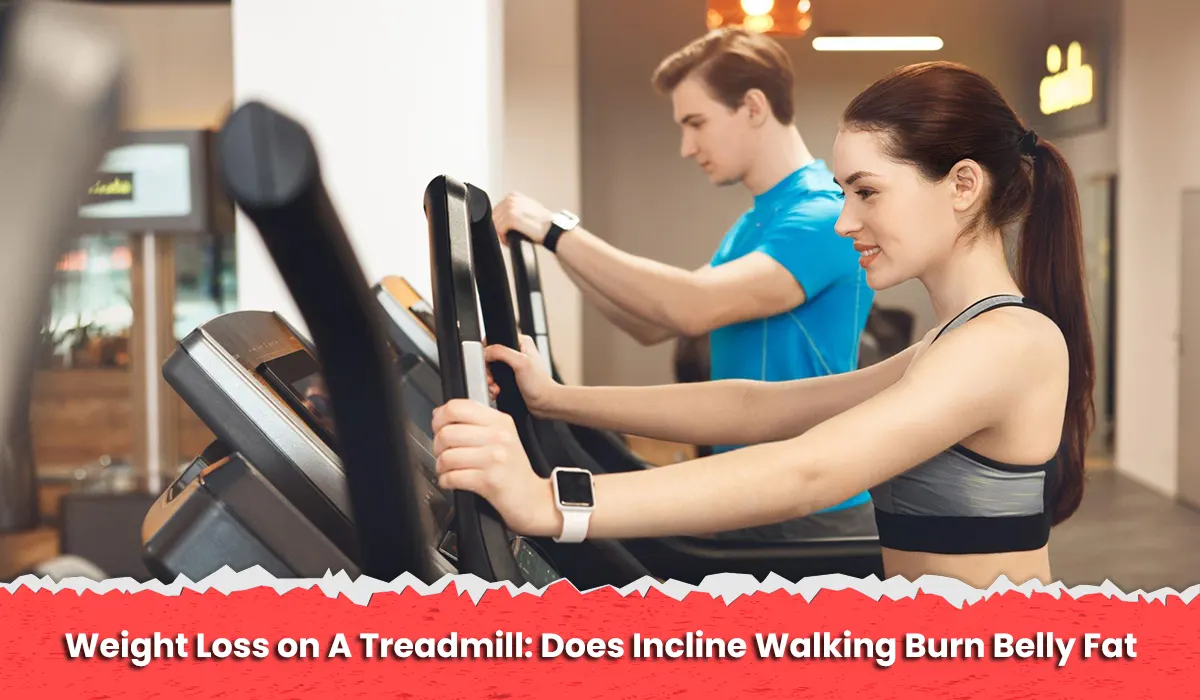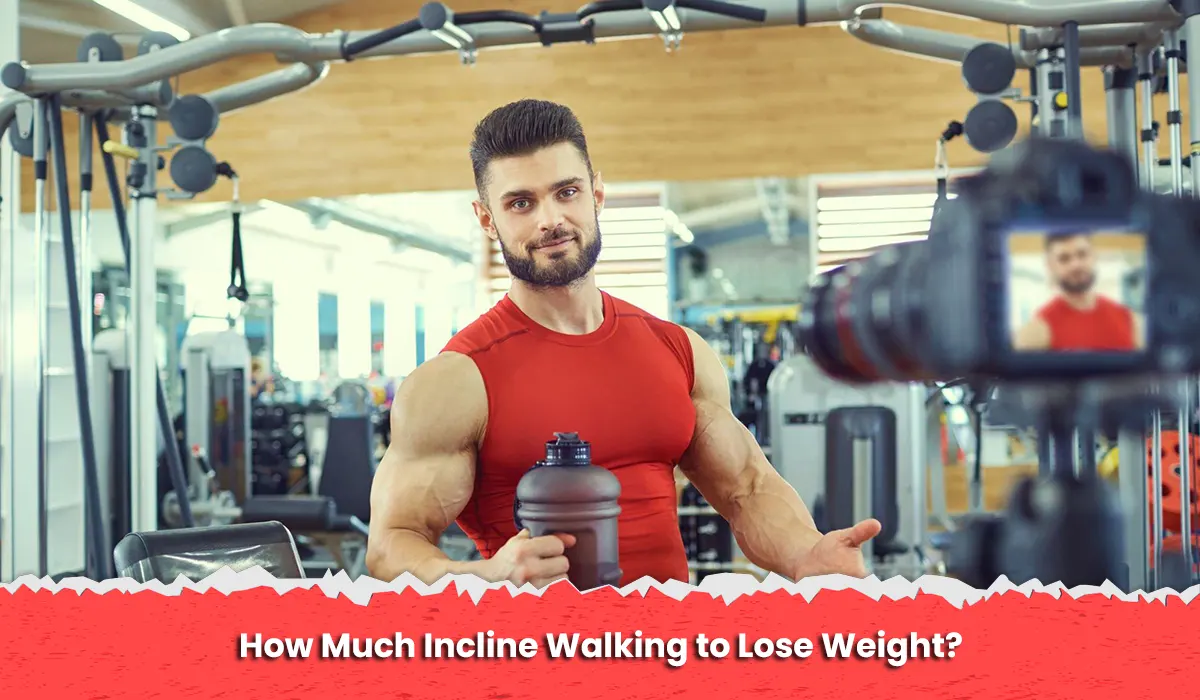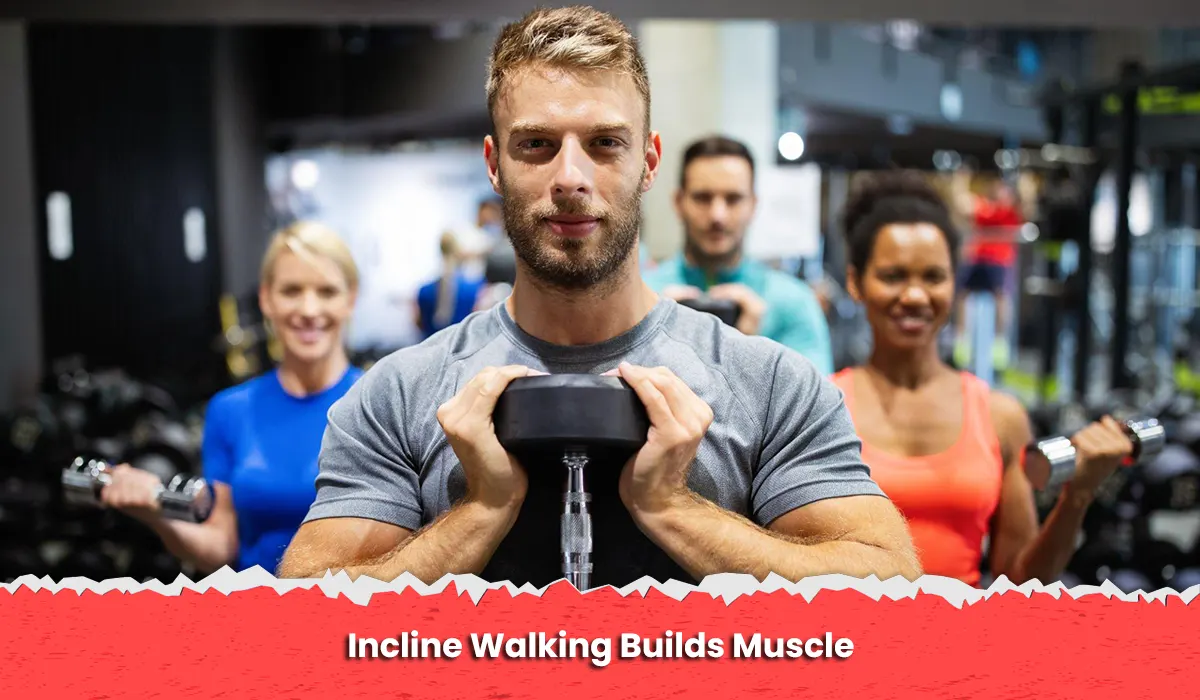
Walking has been shown to help with weight loss, muscle strength, and bone density preservation. Walking also helps with sleep, temperament, and memory.
Does incline walking provide the same advantages?
The quick answer is yes. You can practice incline – even small incline – walking for weight loss safely and effectively. Read on as we unpack the science behind this and reveal the strategies to maximizing your weight and fat loss efforts.
We even included a workout, so don’t forget to check it out below:
How Much Incline Walking to Lose Weight?

According to studies, even a 1% slope helps burn 12% more calories. The metabolic cost rises as follows:
- 17% with a 5% incline
- 32% with a 10% incline
As a result, a 155-pound person expends 76 calories per mile on flat terrain. Going uphill clenbuterol for sale increases calorie burn by 58.65%, contributing 44.57 calories per mile.
The catch is this:
Even when going uphill, you must keep the same speed.
Here’s the issue:
Treadmills entice you by allowing you to set your own incline. If your treadmill has a steep tilt, the allure is amplified.
So, if your fitness level is ordinary or above-average, you’ll assume it’s safe to adjust your incline in the top half.
That would be a blunder.
If you’ve never used a treadmill before, you’ll quickly realize that the steep slope forces you to slow down. That path has its own benefits, such as making your leg muscles work harder, allowing you to gain muscular bulk and sculpt your legs.
However, you will experience muscle soreness and a decrease in calories burned.
There are two options for dealing with this issue:
One method is to gradually increase your incline. If you want to burn more calories and lose weight faster, you should utilize your treadmill every other day. Setting a steep gradient lengthens the rest period.
Another option is to enroll in an HIIT fat-burning program.
These routines seamlessly include incline into your routine to keep your speed consistent and your fat reduction accelerated. Furthermore, if you’re not new to this page, you’re aware that HIIT increases calorie burn even after you’ve completed your workout.
Aside: Ideally, you have a treadmill with a variety of built-in routines from which to select an incline-based plan that meets your needs. If you haven’t already, YouTube is brimming with treadmill-friendly exercises.
Alternatively, try this 30-minute program:
- Set your timer to 60-second increments.
- Warm-up: three 0% incline and 3 mph intervals
- High-intensity: one interval at 4 mph with a 5% incline and one interval at 4 mph with a 15% incline
- If this pace is too fast for you, reduce it to 3 mph.
- Low-intensity: two 3 mph intervals with a 0% incline
- Repeat the high and low intensity periods five times more.
- Three periods at 0% incline and 3 mph to cool down.
Does Walking on an Incline Burn Fat?
Many people effectively use treadmill incline for weight loss. And those pounds shed aren’t just water weight; they’re also burned fat.
This is why:
Incline Walking Boosts Your Heart Rate
Walking or jogging raises your heart rate, but exercising on an incline raises your heart rate much faster. Furthermore, even if you slow down, your heart rate remains elevated.
According to studies, each incline increase raises your heart rate into the fat-burning zone.
The anaerobic or VO2 max zone is your goal if you want to lose weight. However, you should always see your doctor, especially if you have any pre-existing medical conditions.
However, a study of 18 elite runners found that their average heart rate was 148 beats per minute while jogging for five minutes on level ground. After another five minutes of relaxation, the group upped the incline to a meager 2% for another five minutes.
This time, the average heart rate was 155 beats per minute, representing a 5% rise. The 15% incline increase, on the other hand, increased the group’s heart rate to 180 bpm, or 8.22% increase.
Although this study was conducted on runners rather than walkers, the same idea applies. So, if you want to get into the anaerobic zone, even a 2-5% incline increase will suffice.
Incline Walking Builds Muscle

Walking on an elevation not only helps you lose weight, but it also helps you build muscle. As a result, the pounds you’re losing are fat weight.
Why does incline walking help you gain muscle?
First, there’s science. Many studies suggest that even minor inclines of 3-6 degrees promote activation in the calf muscles, hamstrings, and buttocks.
Second, you can feel it by yourself.
When you push uphill with your legs, you use your calves and hamstrings while clenching your buttocks. Regular walking at zero incline, on the other hand, forces you to rely more on your quadriceps.
That’s another reason to mix no-incline and incline walking into your HIIT routine.
We also mentioned that HIIT aids in fat loss. In fact, a study found that doing an HIIT routine three times per week for 12 weeks generated the following outcomes in subjects:
- Weight decrease of 1.5 kg
- 2 kg weight loss
- Visceral fat is reduced by 17%.
Does Walking on an Incline Burn Belly Fat?
Yes, walking uphill burns belly fat. The aforementioned results support this claim because:
- You’re slimming down.
- You’re losing weight.
Some of that fat will come from your midsection, owing to the fact that uphill walking also creates lean core muscles. When walking on an elevation, you’ll need to activate your abs and lower back significantly more than when walking normally.
This increased muscular involvement results in a more toned midsection.
Furthermore, your expanding abs will burn through the visceral fat deposits in the area.
Another reason why incline walking helps you lose abdominal fat is:
You’re doing well for your heart and lungs. Some heart disorders can cause fluid buildup and, as a result, weight gain.
However, if you work on improving your aerobic health and endurance, you can prevent these problems.
Walking also strengthens your endocrine system, preventing hormonal abnormalities. And, if you didn’t previously know, hormonal imbalances can result in unexplained weight gain, particularly abdominal fat accumulation.
It’s known as “hormonal belly,” and it can be eliminated by just walking at a 2-5% slope.
Incline Walking Weight Loss Results
You understandably want to see immediate results. Who wouldn’t? You must, however, continue with your fitness schedule.
As you can see, all of the studies we cited above last at least 12 weeks, but some individuals’ problems improve as early as six weeks.
If you want better (and faster) before and after results, follow these steps:
- Make necessary dietary changes. You can limit your daily caloric intake to 2000-2500 calories. If you’re already in this range, some research suggests that intermittent fasting is an effective weight loss method for avoiding plateaus. Furthermore, intermittent fasting has been proved to boost mood and sleep, but you should consult your doctor to see if it is the best technique for you.
- Take regular walks. Don’t be lazy. Life occurs, and most of us never have a perfect time to exercise. So, rather than waiting for the planets to align, hop on your treadmill and figure out what works for you. Even if 5-minute spurts six or seven times a day aren’t as effective as a 35-minute regimen, they’re better than nothing.
- Do high-intensity interval training (HIIT). HIIT has been shown to increase weight loss even while at rest and decrease fat reserves, especially visceral fat. So, for maximum results, alternate between walking and walking at an inclination (even if a 30-minute program burns fewer calories).
Also, as always, select the best treadmill for your needs. You’ll need a walking treadmill that allows you to adjust the inclination and speed as needed. That is to say:
- A sufficient speed and angle to improve your fitness level
- Small enough increments will help you progress more quickly. You’ll note that 0.1% or 0.1 mph increments are much smoother than 1% or 1 mph intervals, whether you’re a beginner or not. Furthermore, research suggests that even the slightest increase in incline and pace will significantly expedite your weight reduction.

